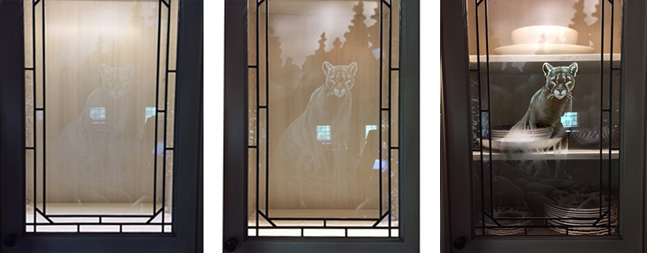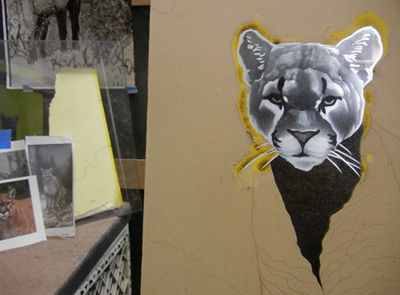Regarding the importance of considering how etched glass and light go together: this post is a study in progress, an exploration of the subject. My goal is to arrange what I’m learning into an easy to digest overview of the subject so that a quick look at the page results in raised awareness

I’d like to say that lit sandblast is like the “peanut-butter and Jelly” of glass art. They do indeed belong together, but unfortunately it’s more like everybody is mostly having jelly sandwiches. Not a great analogy. A more direct comparison would be like you order up something from the neon guy but he doesn’t add a cord, but also you don’t even know what a cord is or why you would want to plug it in… and you’ve never even seen neon lit up so you don’t care. That comparison will have to do.
The point is that I have decided to make lighting a priority, in that at the very least it is taken into full consideration in every job I do that might need it. This decision is easier to make now than it ever was before because the industry is finally making the things we sandblasters have been forever dreaming about having. Yesterday was the first time my queries for the obscure conceptual components of what would be necessary to for example, light a door, actually brought up results. I googled the term “wiring through hinge”, which I have been doing for years, but this time, there it was, and so was the rest of what I would need, it all came up! So the time has come.

What finally cemented the shift was a recent cabinet job – six “lit” cabinet door etchings… and so the lighting was in consideration, but not by me. In this case it was known that the lighting was going to be handled by the contractor. My only thought was happiness that there would be light. As I said, it doesn’t happen often enough. I did however make sure to etch them strong, just in case the lighting didn’t happen. As you can see this cougars face is as strong and bright as is possible… so when I got a call from the customer that I might need to etch them stronger, I knew it was time to get a real handle on lighting.
So how is it that I am approaching 30 years in the business, and it is only now I am adopting a policy that could eliminate such a potential serious disappointment for my clients? Most of that is due to having worked almost all of those years, in the studio, in the sandblast booth, and never really knowing how the job ended up looking onsite. It may be that there was a whole lot of luck as far as favorable natural light conditions that occurred along the way. It might also be that it fell to others to fix it when it was an issue. Most often, it was probably much like in the neon comparison, that the clientele having never seen the etching lit, simply were not often aware of what might be missing.
Here was the perfect scenario for accelerating a solution. Re-doing the cabinet etchings would not solve the issue in this circumstance. It had to be solved with the lighting itself. I came up with an idea of what might work, made a quick video of trying it out, and sent it to the electrician who was trying to deal with the issue. He tied it out and sent me photos of the result which you can see at the top of this post.